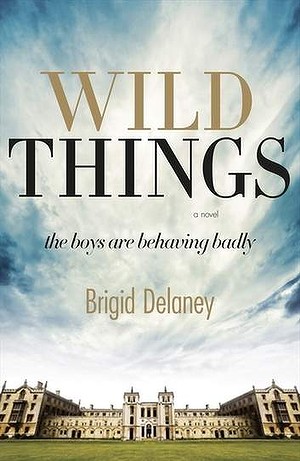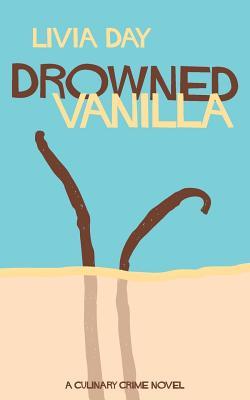As your humble correspondent regarding all things crime and mystery related I have been woefully neglectful of the latter half of this year’s challenge. Thankfully reviews rolled in without me. I thought for this final round up of the year I’d focus on some new titles to this corner of the challenge, including this delightful, if rare, review. It’s from one of the challenge’s minority group (i.e. male) participant and is of one of the very few true crime books to receive attention. Helen Garner’s THIS HOUSE OF GRIEF tells the sad and sadly real-life tale of an Australian bloke who drove into a dam with his three young children in the car. They died. He didn’t. In his review Jonathan at Me Fail? I Fly! encapsulates all that is good about non-fiction (which are all the reasons I stay well-clear of it most of the time):
The book is beautifully written. It’s subtle, sharp and unremitting. It conveys brilliantly the theatre of the court. It’s brave too: Helen Garner doesn’t back off from offering her own readings, her own judgments, of the many courtroom participants – witnesses, lawyers, judges, journalists, family members of the accused and of the dead children, her own young companion Louise, a bumptious school student drop-in, and at the centre of it all the man himself. I found it gruelling, and ultimately very satisfying, even while it pins a huge question mark on the tail of the whole legal system: so much raking through people’s lives and relationships, so many people put through the horrendous ordeal of cross-examination (much worse here, it seems, than in standard TV fare) – surely there must be a better way than this single-minded quest to find where to apportion blame?
♣ ♣ ♣ ♣ ♣ ♣ ♣ ♣ ♣
 Brigid Delaney’s debut novel WILD THINGS, which concerns a hazing carried out by well-off university students upon a hapless foreign student, came to the attention of Angie Holst at Projected Happiness. Among her observations are the novel’s contemporary feel
Brigid Delaney’s debut novel WILD THINGS, which concerns a hazing carried out by well-off university students upon a hapless foreign student, came to the attention of Angie Holst at Projected Happiness. Among her observations are the novel’s contemporary feel
I thought her reading of contemporary culture, her incorporation of social media into the plot line, and her dialogue of the Gen Y characters was spot on. Her description of a university ball was painfully sharp:
‘The boys would sit at the tables in their teams and packs and talk about girls and football and their older brothers. They’d get drunk and get pulled onto the dance floor before they remembered they didn’t know how to dance. So a girl with too-tanned skin dressed like a butterfly would dance around them while they stood swaying and shuffling, unsure where to place their hands’.
and the sensibility it displays over and above plot
And while I would say that this is a very plot driven book, the writing is beautifully atmospheric and at times when Delaney is describing the ethereal landscape of the students lounging around the lovely college grounds…
♣ ♣ ♣ ♣ ♣ ♣ ♣ ♣ ♣
 At Write Note Reviews Monique discovered Annie Hauxwell’s A MORBID HABIT which sends its normally London-based investigator protagonist, Catherine, to Russia. As is often the case with modern crime novels, whodunit is not necessarily what attracts readers’ attention
At Write Note Reviews Monique discovered Annie Hauxwell’s A MORBID HABIT which sends its normally London-based investigator protagonist, Catherine, to Russia. As is often the case with modern crime novels, whodunit is not necessarily what attracts readers’ attention
Like most other investigator-protagonists in this genre, Berlin carries heavy baggage. In her case it’s a serious drug addiction, something she’s managed for years with replacement therapy, and hidden from most. No time is wasted on giving backstory, and I can’t comment about the first two books about the addiction’s source, but what is clear is that Berlin’s addiction has affected her career, lifestyle and relationships significantly (not unexpected). Hauxwell briefly raises the variance of therapeutic treatments for such addictions by contrasting replacement therapy (used in the UK) with abstinence (used in Russia), highlighting this in more depth with an insight into the underground drug culture in Moscow. It’s a frightening glimpse at the lengths people will go to get their fix. Hauxwell also gives a sad and sobering insight into the addict’s mind, through Berlin and some secondary characters.
♣ ♣ ♣ ♣ ♣ ♣ ♣ ♣ ♣
 Fellow AWW correspondent Tsana at Tsana’s Reads is normally a reader of speculative fiction but she ventured into cosy crime territory with Livia Day’s DROWNED VANILLA, which sees an amateur detective-and fledgling-ice-cream maker become involved in the investigation of a disappearance in Tasmania. Tsana found it gripping and entertaining and recommended it to those readers who like banter.
Fellow AWW correspondent Tsana at Tsana’s Reads is normally a reader of speculative fiction but she ventured into cosy crime territory with Livia Day’s DROWNED VANILLA, which sees an amateur detective-and fledgling-ice-cream maker become involved in the investigation of a disappearance in Tasmania. Tsana found it gripping and entertaining and recommended it to those readers who like banter.
Another AWW co-host, Shelleyrae at Book’d Out, highlighted a different cosy crime novel in Ilsa Evans’ FORBIDDEN FRUIT. The series heroine discovers human remains buried in her new home’s backyard and so reactivates an investigation into the disappearance of a woman in the 1970’s. Shelleyrae wrote glowingly of this well-plotted mystery but ended her review on a sad note for series fans
Forbidden Fruit, like the entire series, is a delightful blend of mystery, humour and domestic drama. Sadly this will be the final installment in the Nell Forrest Mystery series unless Nell finds a stronger audience. I implore readers whose interest is piqued to purchase a copy from your favourite ebook retailer
♣ ♣ ♣ ♣ ♣ ♣ ♣ ♣ ♣
Perhaps it’s too late for you to add any of these titles to your reading list for 2014 but the AWW challenge will return next year so why not pick up one (or more) of these now. If you’re after more ideas of crime/mystery/thriller or true crime books to read then head over to the genre’s reviews page for this year’s challenge to see what else is being discussed or check out the previous roundups for this review category
- AWW2012 Crime Wrap Up for the year
- AWW2013 Crime Roundup #1
- AWW2013 Crime Roundup #2
- AWW2013 Crime Roundup #3
- AWW2013 Crime Roundup #4
- AWW2013 Crime Roundup #5
- AWW2013 Crime Roundup #6
- AWW2013 Crime Roundup #7
- AWW2013 Crime Wrap Up for the year
- AWW 2014 Crime Roundup #1
- AWW 2014 Crime Roundup #2
- AWW2014 Crime Roundup #3
- AWW2014 Crime Roundup #4
About Me
I’m Bernadette Bean. I’ve been reading avidly for as long as I can remember, blogging about reading since late 2008 at Reactions to Reading and co-hosting Fair Dinkum Crime, a site devoted to promoting and discussing Australian crime fiction, for the past couple of years. I read and reviewed 18 books as part of my own participation in the 2012 challenge. Some of them weren’t even crime novels!





Thanks for the kind words, Bernadette. I’ll try to stay rare and delightful